Social Architecture in Madrid
Last year, in may, I received an email from Eugenio Pandolfini purposing to write an article for a book for the Kent State University, Florence Program. Eugenio asked me to write about the special moment that is living the architecture and new urbanism in Madrid.
The book “The Kent State Forum on the City: MADRID” goes beyond the traditional concept of a book: it is a manual, a tool to understand the transformation of Madrid in the past years. It will allow the reader to get to know the projects which represent such transformation and locate, classify, activate and even transform this content.
Edited by: Paola Giaconia, Eugenio Pandolfini and published by my friends from dpr-barcelona.
More info here: http://www.ksuforumonthecity.com/
Below my article:
Social Architecture in Madrid
Collectives, networks and adhocratic relationships
In Madrid, the professional and cultural architectural scene has been experimenting with different emerging processes. In the last few years we have witnessed the growth of urban innovation, ideas and practices developed by groups of architects in close collaboration with professionals from other fields, and with the support of citizens that were tired of policies, projects and regulations more and more restrictive and exclusive.
This is a very special moment. Part of the citizenship is acting autonomously by means of the support and mediation offered by architects.
Where does it come from?
Keep in mind these three key points::
– Working spaces created by students have multiplied
– The world of culture offers economic resources and visibility for the young
– Located Collective Intelligence
Working spaces created and shared by students
In Madrid, students have been renting apartments and transforming them in shared working spaces for years.
There are no hierarchies within these spaces and the pressure we often find in a working environment does not exist, since economic sustainability or starting up a company are not the goal. They are more like a laboratory, a place for freedom and independence.
In these labs one can find an impressive amount of creativity and innovation, not only in their “productions” but also in the dynamics of how work is organized -in a more open and horizontal way. These structures quickly take up the so called alternative cultural, economic, and political views.
Críticism of the economic, political and social model
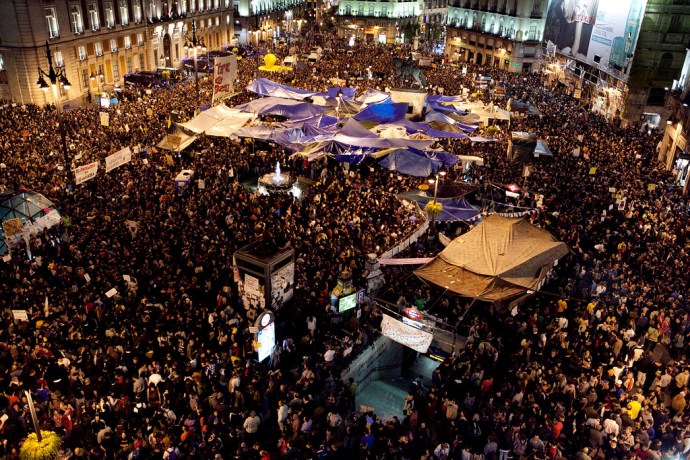
Acampada Sol by julioalbarran| http://www.flickr.com/photos/julioalbarran
Creative Commons | Attribution-NonCommercial-ShareAlike 2.0 Generic | CC BY-NC-SA 2.0
In the last 15 years Madrid has lived the beginning of a very important cultural change of which the indignados (the outraged) movement is one of its most famous consequences. It is not coincidence that this movement started in Madrid.
There is no doubt that this movement was enriched by a much more alert and critical view of what is happening in the world -a proliferation of very active social movements with a strong presence among the citizenship.
Certainly, most of these movements share a common trait, a certain radicalism and lack of spirit of inclusion. Nevertheless, they have done a tremendous job in injecting into society new points of view and an increasing demand of social justice.
In time, their discourse has matured, thus allowing for more inclusive processes. This has even permitted other groups to make those ideas their own in theory and in practice.
Regarding architecture, something very similar has happened with this new generation of collectives. It is impossible for them not to take into account this new cultural and social sensibilities from the very beginning.
On the one hand, it is clear that the boundaries between professional live and personal development are disappearing. On the other hand, our economic activities are now more related with personal ethics and with a lifestyle that is more aware of the demands of the communities we belong and relate to.
In other words, this is the turning point for a generation that rejects money as the sole and only element of efficiency (Pierre Levy,1994).
The world of culture offers economic resources and visibility for the young
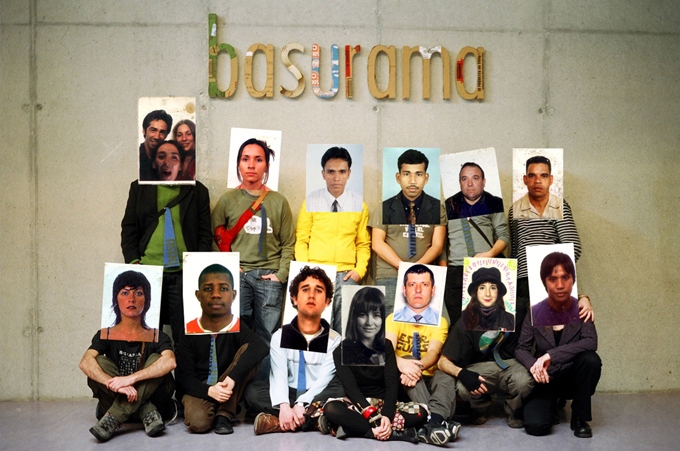
During the Spanish real state bubble, the city’s main cultural promotion agents, whether from the public or the private sector, had at their disposal vast economic resources and were in need of content for the many recently open venues and spaces. The new generation of architects took the chance and were the stars of the cultural program of different exhibitions and spaces. This, in turn, helped them gain visibility in a very short time.
Zuloark y Basurama are, perhaps, among the most remarkable on that generation.
However, there was no real debate between generations. It is now, in a crisis situation, that the former “masters”, those who did nothing to stop the crisis, want to open a dialogue. All of a sudden, there is a lot of talk about collectives and collaborative practices going on.
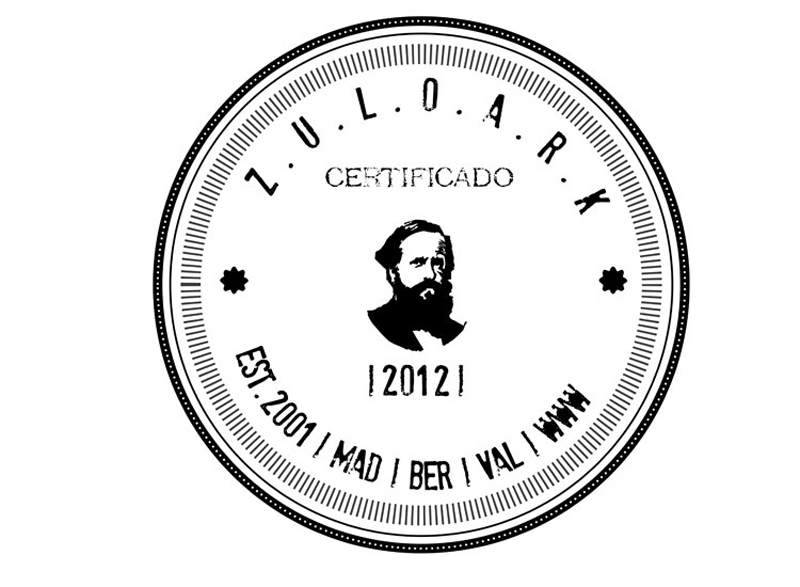
Located Collective Intelligence
There is one trait that differentiates Madrid from any other Spanish or European city, that is, the connection between the agents that transform the city – professionals, students, public administrators, technicians and cultural managers. There is a constant exchange of ideas, projects and references between them.
This exchange does not take place in television debates neither are the result of the meddling of intermediaries -curators, magazines, public or private entities. It comes from everyday interactions that allow us to be better researches and that improve our work.
Open culture ethics and open culture philosophy are the basis for the creation of this network and, mostly, the cultural references that come to the meeting of this impressive landscape of connections and exchanges within the network.
We are talking about a new professional ecosystem built upon the idea of learning from each other, upon synergies between each other’s skills, upon sheer imagination. Events, decisions, actions and people come together in a shared context, synchronised in real time and generating Located Collective Intelligence.

Medialab Prado | Photo by Daito | http://www.daito.ws/work/medialab-prado.html
In this sense, we can highlight some places that have promoted this kind of culture, such as Medialab Prado, a cultural center that belongs to Madrid’s city council. It is basically a laboratory focus on the production of projects related to the Arts, to Technology and to Society. Another example is Patio Maravillas, a self-managed cultural center in an occupied building in Malasaña neighbourhood.
New spaces for emerging citizenships
Campo de cebada
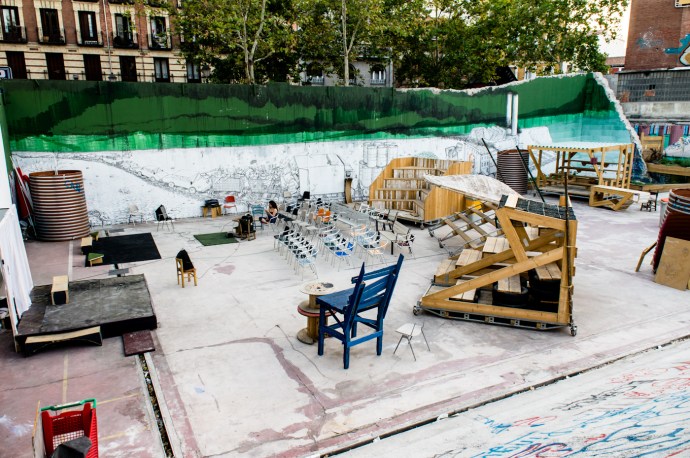
Campo de Cebada by rh2ox | http://www.flickr.com/photos/rh2ox/
Creative Commons | Attribution-ShareAlike 2.0 Generic | CC BY-SA 2.0
This is quite a big space outdoors in the centre of Madrid. Managed by a local community of citizens, it is truly an empty space, a site left without any activity, waiting for a new market to be built. The neighbours -with a little help from some architects -requested to manage the site and found the means to make it possible. Right now this is Madrid’s most interesting public space, a place to experiment first hand self-organizational citizenship. It goes well beyond market relationships and classic urban management practices.
web: http://elcampodecebada.org/
Tabacalera
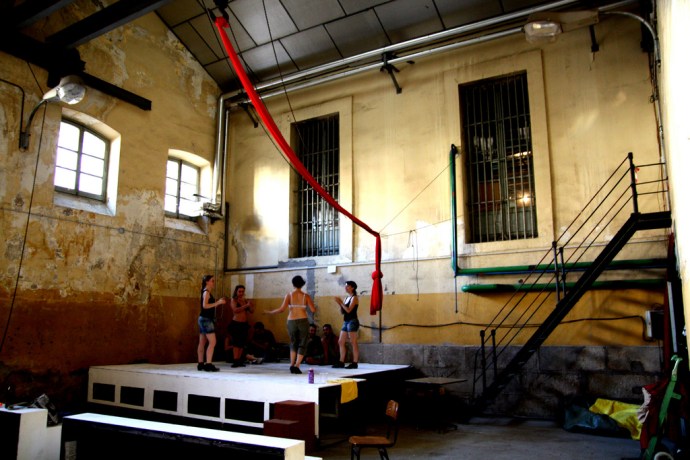
tabacalera by Olga Berrios | http://www.flickr.com/photos/ofernandezberrios/
Creative Commons | Attribution 2.0 Generic | CC BY 2.0
Madrid’s old tobacco factory is currently managed by a community of neighbours and citizens. It has become a cultural referent in a very short time. The different rooms and spaces are not assigned to a single person but to projects and ideas. The “users” shared working labs and discussion spaces with the social and political practices of the neighbourhood and the rest of Madrid. They have put in place a collaborative production model and the ongoing processes are integrated in their environment.
Esta es una plaza (This is a square)
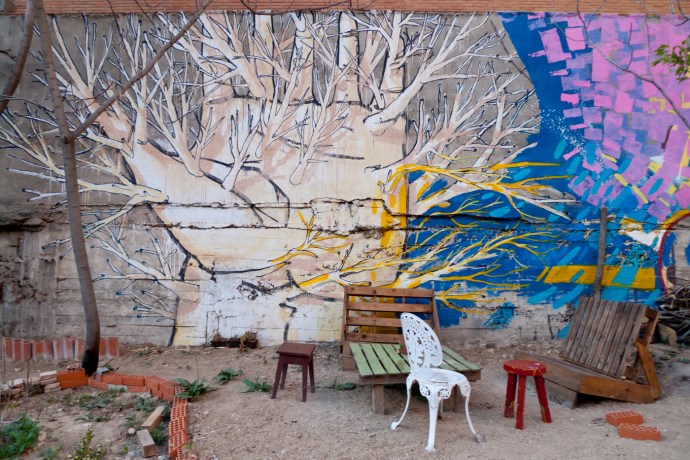
Esta es una Plaza by rh2ox | http://www.flickr.com/photos/rh2ox/
Creative Commons | Attribution-ShareAlike 2.0 Generic | CC BY-SA 2.0
Esta es una plaza was born in a workshop where students and young professionals transformed a construction site, closed for the last 30 years, into a urban vegetable garden for the neighbourhood. After the workshop, the neighbours got permission to use the site. The entire site is available for everybody. They are self-organizing and each participant contributes with some time to keep the site alive.
web: http://estaesunaplaza.blogspot.com.es
———–
Special thank to Marisa for the english edition.
